 Each time the Rockets play the Thunder, four names immediately come to mind: Jeremy Lamb, Kevin Martin, Steven Adams and Mitch McGary.
Each time the Rockets play the Thunder, four names immediately come to mind: Jeremy Lamb, Kevin Martin, Steven Adams and Mitch McGary.
With all draft picks now liquidated, those players make up the return Oklahoma City received for James Harden in October 2012. Martin left the Thunder in free agency after one season off the bench, and the others all score fewer than eight points per game. That’s it. Lamb, who was supposedly the trade’s crown jewel as the No. 12 pick in 2012, isn’t even in Oklahoma City’s current rotation as it fights for the West’s final playoff spot.
Meanwhile, Harden continues to be nothing short of spectacular. In case you missed it, he scored 41 points Sunday afternoon in a scintillating performance in front of his old teammates and fans, including eight points in 70 seconds down the stretch to hold off a furious Oklahoma City rally.
“That’s my job,” Harden said. “It’s what I do. I go out there and I take the big shots.”
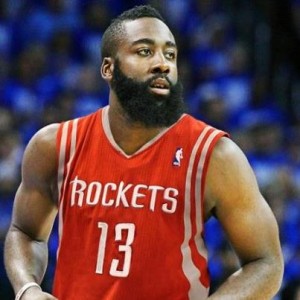 We’ve come to expect it from Harden, who leads the NBA in scoring and may very well be the Most Valuable Player. But most noteworthy is how it helps his franchise in their quest for title contention.
We’ve come to expect it from Harden, who leads the NBA in scoring and may very well be the Most Valuable Player. But most noteworthy is how it helps his franchise in their quest for title contention.
The Rockets, who lost three rotation players (Chandler Parsons, Jeremy Lin and Omer Asik) in the offseason with only one significant addition (Trevor Ariza) and had both Dwight Howard and Terrence Jones miss over half the season with injuries, are somehow a better team this year (53-24) than last (54-28). Even in a stronger Western Conference, they are the No. 2 seed and leading the Southwest Division – the toughest division in sports – after finishing second and going into the playoffs as the West’s No. 4 this time a year ago before a disappointing first-round exit.
And even with Russell Westbrook posting triple-doubles left and right, the Thunder are fighting for their life to claim that final playoff spot. The injuries to Kevin Durant are obviously the leading factor, but having Harden around would clearly help mitigate the loss more than Lamb, Adams and McGary have.
It’s easy to point to that trade as changing the trajectory of both franchises and even easier to use the Rockets and their outstanding GM Daryl Morey as the template for how to rebuild without tanking. After all, despite losing a pair of superstars in Yao Ming and Tracy McGrady to early-career injuries, the Rockets managed to fully rebuild themselves starting in 2010 without suffering a single losing season.
But a closer look at Houston’s rebuild shows that it wasn’t all Morey’s blueprint. His plan helped, but to rebuild the franchise into a contender – all without bottoming out – also required a bit of good fortune and a growing willingness by the organization to take greater risks, including the possibility of being bad.
WHAT SPURRED THE REBUILD
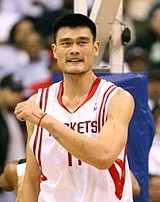 It wasn’t until December 2010 that the Rockets knew they needed a full rebuild. Although Yao missed the entire 2009-10 season recovering from a foot injury suffered in the 2009 playoffs, he remained just 29 years old. Yao was the game’s best low-post big man and, on paper, in the prime of his career. When the Rockets went after Chris Bosh the first time in 2010 free agency, they attempted to sell him on the idea of playing next to Yao on Houston’s front line, rather than replacing him.
It wasn’t until December 2010 that the Rockets knew they needed a full rebuild. Although Yao missed the entire 2009-10 season recovering from a foot injury suffered in the 2009 playoffs, he remained just 29 years old. Yao was the game’s best low-post big man and, on paper, in the prime of his career. When the Rockets went after Chris Bosh the first time in 2010 free agency, they attempted to sell him on the idea of playing next to Yao on Houston’s front line, rather than replacing him.
We all know what happened next. Yao played just five games in the fall of 2010 before reinjuring the same foot and deciding to call it a career.
That put the Rockets and Morey in a difficult spot. With Yao theoretically being in the prime of his career, Morey had surrounded him with a strong supporting cast that, assuming health, might have made the Rockets a contender. After all, the 2008-09 version of the Rockets pushed the eventual champion Lakers to seven games in the conference semifinals, even after losing Yao midway through the series. Veterans such as Luis Scola, Shane Battier, Kyle Lowry and Martin – who was acquired at the 2010 deadline in a deal involving McGrady’s expiring contract – would have made for a formidable lineup around a healthy Yao.
But when Yao never returned, the Rockets found themselves in no man’s land. They essentially lost a superstar for nothing in return, yet the roster still had enough quality and depth to keep them from losing enough to snag a high draft pick. The roster also had plenty of veteran salaries, thus also preventing Houston from being a major player on the free-agent market.
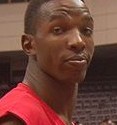 Morey consistently churned through his roster and took calculated risks on high-upside, former-lottery players such as Jonny Flynn, Hasheem Thabeet and Terrence Williams, but none ever hit big. As many in Houston put it, it was the “mediocrity treadmill,” and the Rockets appeared to have no way to get off it.
Morey consistently churned through his roster and took calculated risks on high-upside, former-lottery players such as Jonny Flynn, Hasheem Thabeet and Terrence Williams, but none ever hit big. As many in Houston put it, it was the “mediocrity treadmill,” and the Rockets appeared to have no way to get off it.
Further complicating matters, owner Leslie Alexander didn’t want to tank. He didn’t outright forbid Morey from going the route that former Rockets executive and current 76ers GM Sam Hinkie has taken in Philadelphia, but he made it clear that his preference was to remain competitive and put a quality product on the floor for Houston fans.
“Being an extremely crappy team is definitely a well-worn path to success in the NBA,” Morey said in an interview back in 2012, prior to the Harden deal. “Each year, the NBA hands the most valuable asset in the game (a scale-wage top-five pick) to the most mismanaged teams.
“We could go with this approach (in fact, the Rockets invented it long ago), but we think our approach can succeed as well and can succeed faster, even though it is more difficult.”
The end result from 2009 through 2011 was three seasons of 42-40, 43-39 and 34-32, all of which ended up in narrow playoff misses and the No. 9 spot in the West. And the reward for Houston was mid-first-round picks such as Patrick Patterson, Marcus Morris and Lamb – certainly useful role players, but not foundation pieces on which to build a contender. The Rockets needed higher picks to get players of that potential, but the roster prevented them from losing enough games to get there.
THE TRADES THAT WEREN’T
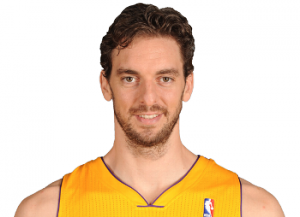 Think back to December 2011. The months-long lockout had just ended, and the Rockets entered a compressed free agency period coming off the second of those three mediocre seasons. Morey saw the writing on the wall and took his first big swing of the post-Yao era, striking a deal to send Martin, Scola and Goran Dragic elsewhere to bring in Pau Gasol in the three-way trade that was to send Chris Paul to the Lakers. The Rockets also had Nene waiting in the wings to potentially sign as a free agent following the Gasol trade, giving Morey a core of Lowry, Gasol and Nene to build around.
Think back to December 2011. The months-long lockout had just ended, and the Rockets entered a compressed free agency period coming off the second of those three mediocre seasons. Morey saw the writing on the wall and took his first big swing of the post-Yao era, striking a deal to send Martin, Scola and Goran Dragic elsewhere to bring in Pau Gasol in the three-way trade that was to send Chris Paul to the Lakers. The Rockets also had Nene waiting in the wings to potentially sign as a free agent following the Gasol trade, giving Morey a core of Lowry, Gasol and Nene to build around.
Of course, the whole thing unraveled when Commissioner David Stern infamously vetoed the trade for “basketball reasons.” That led to New Orleans dealing Paul to the Clippers instead, and it forced Morey and the Rockets to maintain the status quo.
With Gasol off the board, Morey’s next marquee chase was Dwight Howard – first at the 2012 trade deadline and again that summer. The deadline talks ended when Howard surprisingly opted into the final year of his existing contract with Orlando for the following season. The summer talks never seemed to gain especially serious traction because new Magic GM Rob Hennigan appeared to prefer dealing Howard to teams on the All-Star center’s wish list, such as the Lakers and Nets.
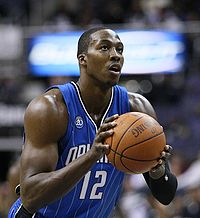 The Howard chase was intriguing because of Morey’s clear desperation. Even as Howard’s inner circle continuously leaked word that he would never re-sign with Houston – essentially making him a rental – Morey remained undeterred and in dogged pursuit.
The Howard chase was intriguing because of Morey’s clear desperation. Even as Howard’s inner circle continuously leaked word that he would never re-sign with Houston – essentially making him a rental – Morey remained undeterred and in dogged pursuit.
They were willing to call what they saw as a bluff by Howard and hoped the extra year and $30 million in guaranteed money they could offer Howard as their player would ultimately convince him to stay. In other words, Morey’s need for a star was strong enough that he would gamble on a player who clearly didn’t want to be there.
In hindsight, the most interesting thing about those two non-moves for Gasol and Howard is in how they would have prevented Morey from obtaining Harden, who might now be the best player in the world.
If the Gasol trade had happened, the Rockets would not have had Martin and his expiring deal to offer Oklahoma City as an effective “Harden replacement” in the sixth man role. They also probably would have made the playoffs in 2012 and not have been in position to draft Lamb.
And if the Howard trade was the one to materialize, Martin undoubtedly would have been in that swap as well for purposes of matching Howard’s max salary. The Rockets also would have almost certainly had to send out multiple first-round picks, thus depleting the stockpile that ultimately made them a preferred partner for Thunder GM Sam Presti when he was looking to deal Harden.
Additionally, neither deal seemed all that likely to make the Rockets a serious contender, anyway. The Lowry/Gasol/Nene core would probably have been a consistent playoff team, but can a team with Lowry or Gasol as its best player win a title in the modern NBA? It seems doubtful.
Howard, meanwhile, struggled through an injury-plagued 2012-13 season with the Lakers, clashing with Kobe Bryant’s alpha dog personality. He then proved he wasn’t bluffing about his willingness to walk away from the extra guaranteed money by departing in free agency for a team he saw as a winner. Ironically, that was Houston, whom with Harden suddenly became attractive to other stars.
It could certainly be argued that Stern’s veto and Howard’s reluctance to include Houston on his 2012 wish list ultimately saved the Rockets from themselves.
WHEN EVERYTHING TURNED AROUND
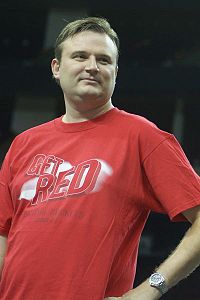 Some point to the Rockets’ emergence as a story against tanking. But it was actually the team’s slight shift in philosophy – and an increased willingness by Morey and Alexander to finally take a step backward – that ultimately put them in a position in late 2012 to make the Harden trade with Oklahoma City.
Some point to the Rockets’ emergence as a story against tanking. But it was actually the team’s slight shift in philosophy – and an increased willingness by Morey and Alexander to finally take a step backward – that ultimately put them in a position in late 2012 to make the Harden trade with Oklahoma City.
After coming up short on both Gasol and Howard, the Rockets spent much of the summer of 2012 stripping down their mediocre roster and focusing first and foremost on accumulating trade assets. They dealt Lowry to Toronto for an effectively guaranteed lottery pick (reverse protection), believing that would be more attractive in trade talks than Lowry himself. They obtained three first-round picks, which they used on Lamb, Jones and Royce White, and planned to play and develop them all. They used the amnesty clause to get out of Scola’s contract and create financial flexibility. At one point, their roster reached the summer league maximum of 20 players.
“You definitely need at least one elite player in the top 10-20 of all NBA players to win the championship,” Morey said following the 2012 offseason and before the Harden trade, which came a month later. “There are no counter examples of this.
“All our moves since Yao Ming went down have had the specific goal of acquiring a top-level player since that moment. Each change on our team has been designed to acquire players who either have a chance to be an All-Star or give us the cap room or trade flexibility to acquire an All-Star.”
Until the Harden deal was consummated on the eve of the 2012-13 season, that Rockets team looked like it was going to be bad – and that was kind of the point. The best players were arguably Lin and Asik, whom Morey took gambles on in restricted free agency. Each of the rookies was slated for significant playing time. The Rockets were treating it as a developmental season and hoping to receive a high draft pick in 2013 as the biggest cornerstone to their rebuilding efforts.
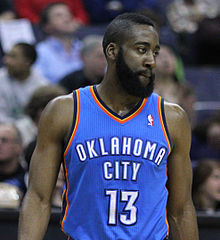 Ultimately, Houston didn’t have to go that route. Unwilling to give their sixth man the max deal he was seeking, the Thunder made the enormous mistake of putting Harden on the market. The lottery pick Morey obtained from Toronto was a key part of the package, and the Rockets have been on an upward trajectory ever since. In his first season as a starter, Harden dragged the rag-tag Rockets to the playoffs as a No. 8 seed. Houston added Howard the following summer in free agency and moved up to No. 4, and this season appears poised to finish as high as No. 2.
Ultimately, Houston didn’t have to go that route. Unwilling to give their sixth man the max deal he was seeking, the Thunder made the enormous mistake of putting Harden on the market. The lottery pick Morey obtained from Toronto was a key part of the package, and the Rockets have been on an upward trajectory ever since. In his first season as a starter, Harden dragged the rag-tag Rockets to the playoffs as a No. 8 seed. Houston added Howard the following summer in free agency and moved up to No. 4, and this season appears poised to finish as high as No. 2.
Morey deserves a significant amount of credit for building a quality roster around Harden, not just with the addition of Howard but also the subtle moves for Ariza, Corey Brewer and Josh Smith and even plucking Pat Beverley out of Russia.
But let’s not fool ourselves: the catalyst is Harden. Most expected the 2014-15 Rockets to take a step back after losing Parsons, Lin and Asik – and that was even assuming good health for the front line of Howard and Jones. Instead, even with those two missing over half the season, the Rockets took an enormous leap forward, and it is mostly because of Harden’s evolution into a legitimate MVP candidate.
So when we evaluate clubs such as Philadelphia who attempt to rebuild by tearing it down, remember the true story of Houston’s blueprint. Everything the Rockets have going for them today traces back to that late 2012 trade, and they were only in position to execute it because they weren’t afraid to be bad.
Ben DuBose is a veteran sports reporter who has followed the Houston Rockets and the NBA since Hakeem Olajuwon was Akeem Olajuwon. He writes for both SheridanHoops and ClutchFans, an independent Rockets blog. You can follow him on Twitter.